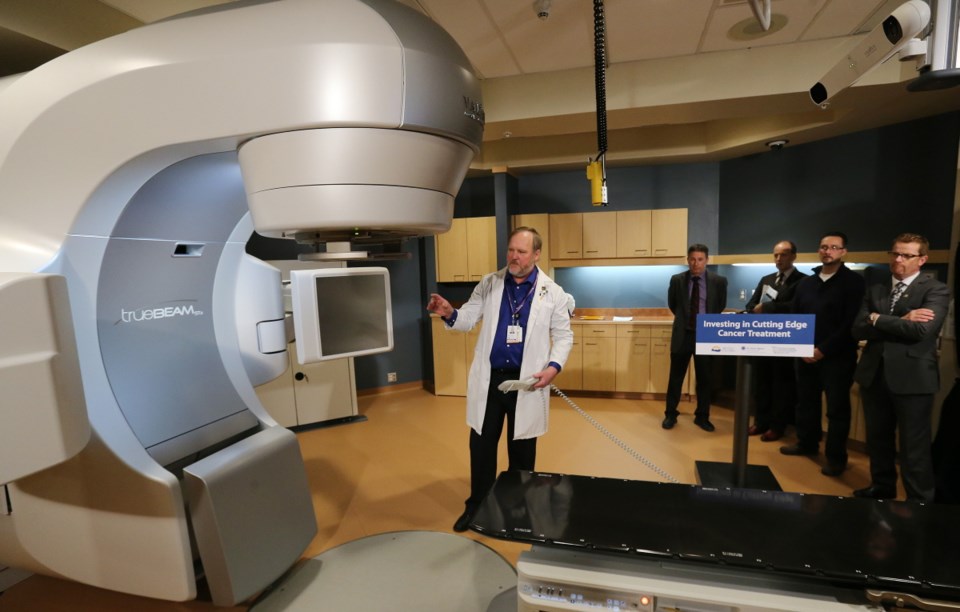The B.C. Cancer Agency in Victoria is now home to the world’s highest concentration of leading-edge radiation therapy machines, according to Dr. Wayne Beckham.
“We have certainly got the highest number in the world at the moment — six of these machines in one place — so we’re unique,” said Beckham, the provincial medical physics leader for the agency. “This puts Vancouver Island at the very forefront of radiation therapy for cancer.”
Health Minister Terry Lake and several specialists were at the agency’s Vancouver Island Centre on Tuesday to watch a demonstration of a TruBeam linear accelerator. Six of the new machines have been installed, replacing older machines. The last of the six was installed in the last few months.
The linear accelerators, which weigh about nine tonnes, use high-energy X-rays to kill tumour cells.
The primary method of treating cancer is surgery. If a tumour can be excised and removed with no spread, that is the treatment of choice.
Radiation therapy is required by about 55 per cent of cancer patients in B.C. either to treat a variety of cancers, reduce their recurrence or mitigate symptoms in palliative patients, the ministry said.
That’s how the machines are being used on Mike Ellis. The married father of two young children said he was diagnosed with a rare form of cancer on his 44th birthday.
Ellis, a plumber and steam fitter, went to the doctor because of back pain caused by an injury at work. After a spinal tap produced adverse events, Ellis said, he had to have a CT scan — which revealed an aggressive cancer called hemangiopericytoma in the cerebral cavity. These tumours have a high rate of recurrence.
It was a shock for the otherwise fit man, who said he had no symptoms.
“If they hadn’t had botched [the spinal tap] they wouldn’t have CT scanned me and they wouldn’t have found it and I probably wouldn’t be alive right now,” Ellis said. “It was a fluke, really.”
A large tumour was removed during surgery, and the new radiation machines are being used to reduce the chance of recurrence. Ellis has had four of 30 scheduled therapies.
He is grateful, he said, to know he has access to the best equipment, especially given the aggressiveness of his type of cancer.
The province provided $24.3 million to replace six machines — at $3 million apiece — and upgrade other equipment.
The linear accelerators are “capable of the most accurate radiotherapy we can deliver” with a beam that is so precise in its positioning it will be competitive with surgery in some treatments, Beckham said.
Radiation oncologists and therapists are able to perform treatments they couldn’t do with the old machines and have recruited a physician based on the specialized cancer treatment work she can do with the machines, Beckham said.
Radiation oncologist Dr. Ross Helperin explained that in lung cancer, for example, radiotherapy is nearing the effectiveness in surgery.
This is important for some lung cancers that haven’t been effectively treated by surgery either because they are in motion or because of their location, once spread, in the body.
“We might be curing some patients who in the past we weren’t able to,” Helperin said.
Helperin said the new machines allow doctors to deliver the best care to patients and attract the best physicians.
“It allows a centre like this to be competitive in the world competition to recruit and retain the best cancer care staff, and with staff excellence comes the opportunity to deliver excellence in care,” Helperin said.



